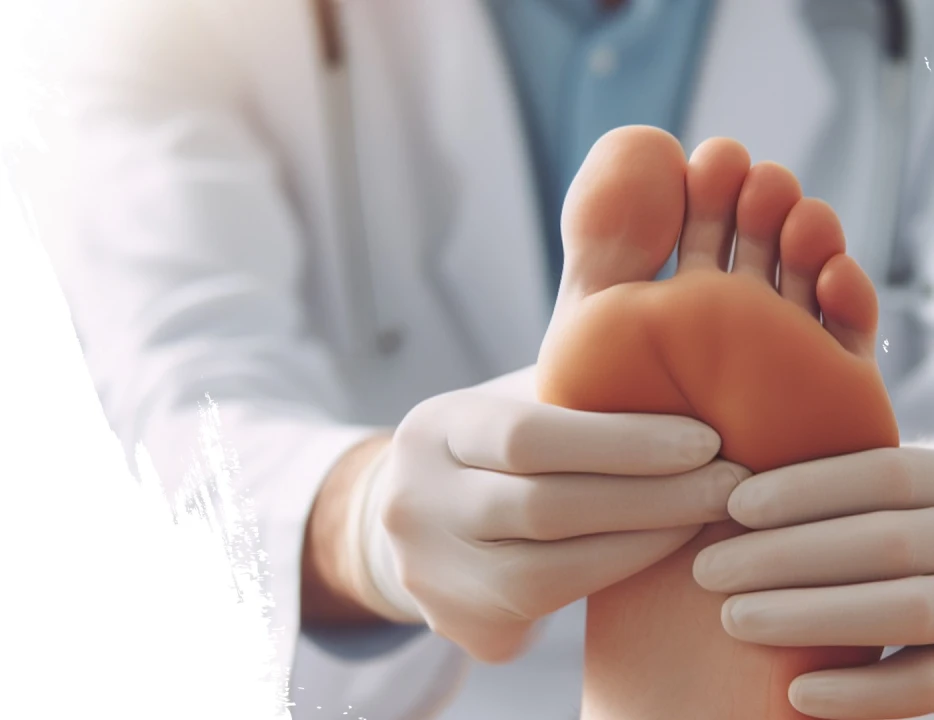Find Relief from Your Symptoms
At Jakupi Podiatry, your trusted podiatrist in Doncaster, we specialize in the diagnosis and Achilles pain treatment to help you walk, run, and move without discomfort.
The Achilles tendon is the longest and strongest tendon in the body, connecting your calf muscles to the heel bone. Despite its strength, it’s vulnerable to tendon injuries and overuse. Whether you’re dealing with Achilles tendinitis, tendinosis, or a tendon rupture, our podiatrists are here to relieve pain and restore mobility.
Common Causes of Achilles Pain
Achilles tendon pain can result from various conditions:
- Overuse injuries: Repetitive stress from running, jumping, or sports can overload the tendon.
- Achilles tendinitis: Inflammation and irritation of the tendon, often causing pain at the back of the heel.
- Achilles tendinosis: Degeneration of unhealthy tissue within the tendon from chronic overuse.
- Insertional Achilles tendinitis: Pain at the point where the tendon inserts into the heel, often with bone spurs.
- Tendon rupture: A partial or complete tear, often felt as a sudden snap, followed by weakness or difficulty walking.
Our Approach to Achilles Pain
At Jakupi Podiatry, we provide expert Achilles pain treatment for conditions like Achilles tendinitis, tendinopathy, and partial tendon rupture. Our approach begins with a thorough diagnosis of your symptoms, including a physical exam and, if needed, imaging to assess Achilles tendon health. Whether you’re dealing with insertional Achilles tendinitis, heel pain, or tendon swelling from overuse, we build a customized treatment plan tailored to your needs.
Most patients benefit from nonsurgical treatments such as physical therapy, custom orthotics, heel lifts, or extracorporeal shock wave therapy to relieve pain and restore function. For more advanced injuries, we may discuss surgical options, including removing damaged tendon tissue or repairing a ruptured tendon.
With compassionate care and proven methods, our goal is to relieve your pain, improve mobility, and help you return to the activities you love, pain-free.
BOOK ONLINE NOWTreatment Options for Achilles Pain
Rest, Ice, & Anti-Inflammatories
Reduce tendon swelling and relieve pain using rest, ice, and anti-inflammatory drugs as first-line treatment.
Stretching & Strengthening
Address tight calf muscles and improve flexibility with customized stretches and strengthening exercises.
Custom Orthotics
Relieve pressure on the Achilles tendon insertion and correct foot mechanics with tailored orthotic devices.
Physical Therapy
Our physical therapists guide recovery with functional rehab plans that promote mobility and healing.
Shockwave Therapy
Extracorporeal shock wave therapy uses sound waves to stimulate blood flow and regenerate injured tissue.
Corticosteroid Injections
Used carefully, injections can reduce inflammation in resistant cases of Achilles tendon pain.
Surgical Intervention
For patients with ruptured tendon, insertional Achilles tendonitis, or chronic tendinopathy, we may recommend surgery to remove damaged tendon tissue, repair tears, or perform gastrocnemius recession.
Contact us
More Questions?
Schedule a consultation with Jakupi Podiatry today and take the first step toward long-term Achilles pain relief. Let us help you get back to running, walking, and living fully.
FAQs
Common Achilles tendinopathy symptoms include tendon pain, stiffness, and tendon swelling at the back of the heel, especially in the morning or after activity. Patients may also experience heel pain, tight calf muscles, or discomfort when pushing off the affected foot, running, or climbing stairs.
To diagnose Achilles tendinitis, your provider performs a physical exam, reviews your medical history, and may order imaging tests such as magnetic resonance imaging (MRI) or ultrasound. These tools help assess tendon damage, rule out a tendon rupture, and guide Achilles pain treatment.
Recovery varies. Mild cases of Achilles tendonitis may improve in a few weeks with nonsurgical treatments like physical therapy, heel lifts, and anti‑inflammatory drugs. Chronic conditions such as Achilles tendinosis can take several months to heal as damaged tendon tissue recovers.
Achilles tendinitis surgery or surgery for an Achilles tendon rupture is performed under anesthesia, so patients do not feel pain during the procedure. After surgery, discomfort is managed with medication, rest, and a walking boot as the remaining tendon and surrounding tissue begin the healing process.
Yes. Most patients return to activity and play sports after rehab and physical therapy. A structured recovery program helps restore strength in the foot and ankle, improve blood flow, and prevent re‑injury, especially in athletes with tendon injuries from repetitive stress.
Insertional Achilles tendinitis occurs where the tendon attaches to the heel bone at the Achilles tendon insertion. It is often caused by repetitive stress, bone spurs, or tight calf muscles. In more severe cases, surgeons may remove damaged tendon tissue or address extra bone growth to relieve pain.
Yes. To prevent Achilles tendinitis, maintain calf flexibility, warm up before activity, wear supportive footwear, and increase training gradually. Strengthening the lower leg, improving mechanics, and addressing conditions like psoriatic arthritis can also reduce the risk of Achilles tendon injuries.



